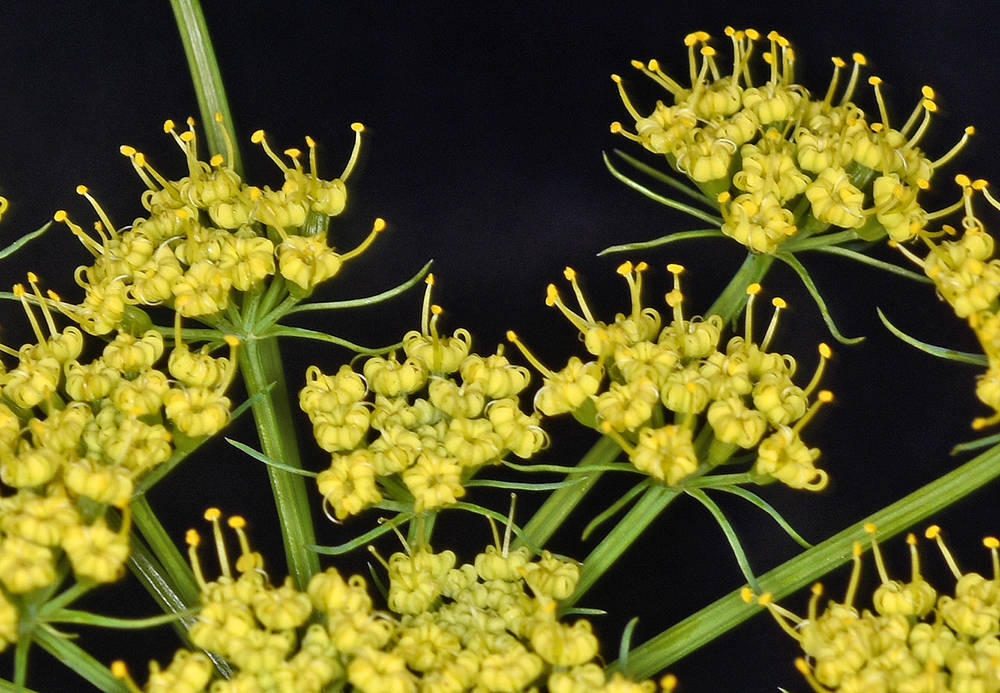
Plants subacaulescent or caulescent.
Roots stout, irregularly thickened taproots.
caudices simple or multicipital; basal leaf sheaths from previous years weathering into a dense thatch of fibers and chaffy scales at base of stem; previous year’s peduncles long-persistent in thatch as gray stalks.
Stems 4–15 dm.
Basal leaves glabrous; primary leaflets pinnate, 5–8 secondary leaflet pairs along each rachis, laterals at least half to subequal to central primary in length; secondaries pinnate; tertiaries pinnate; quaternaries entire or pinnatifid (3–20-lobed), ultimate leaflet pinnules not leafy to base, with a naked intercostal region between rachilla and basal-most pinnule (appearing like a petiolule), (4.5)5–8 mm; ultimate apical lobes linear, in cross section subterete, (6.5)7–15 × 0.1–0.4 mm, tips acuminate.
Cauline leaves 1–3 (more in robust plants), glabrous, similar to basal.
Inflorescences peduncles 1–10+, stout, not inflated, 30–60 cm, 6–8 mm wide (1 cm below tip), glabrous; involucral bracts 0; rays 16–30, 4–12 cm, glabrous; involucel bractlets 0–10, linear or lanceolate, 2–10 × 0.1–0.6 mm, margins narrowly scarious; umbellets 10–40-flowered; pedicels 9–15 mm.
Flowers petals yellow; anthers yellow or ochroleucous.
Fruits oblong or elliptic, 9–16 mm, glabrous; body 3–6 mm; wings 1–2 mm, thin; vittae 1–2 in intervals, 2–6 on commissure.
Talus slopes, rock outcrops, cliff faces, rocky hillsides, open rocky sites in the forest understory. Flowering May. 50–100 m. ECas. WA. Native.
In Oregon, this taxon has been mostly overlooked or collected when the leaflets are not fully expanded. It is found commonly on slopes and hillsides along the Columbia River near the town of Hood River and on slopes in the Klickitat River drainage in Washington. This taxon is replaced abruptly by L. papilioniferum eastward near the town of Mosier and westward just east of Mitchell Point. It is not known how far south this taxon extends, but L. papilioniferum is found just outside this subregion in Tygh Valley. The distribution of L. klickitatense suggests that it is a Pleistocene relict. Modern contact with L. papilioniferum may be a result of that taxon’s post-Pleistocene range expansion westward as the cliffs and talus along the Columbia Gorge became drier, hotter, and more exposed.